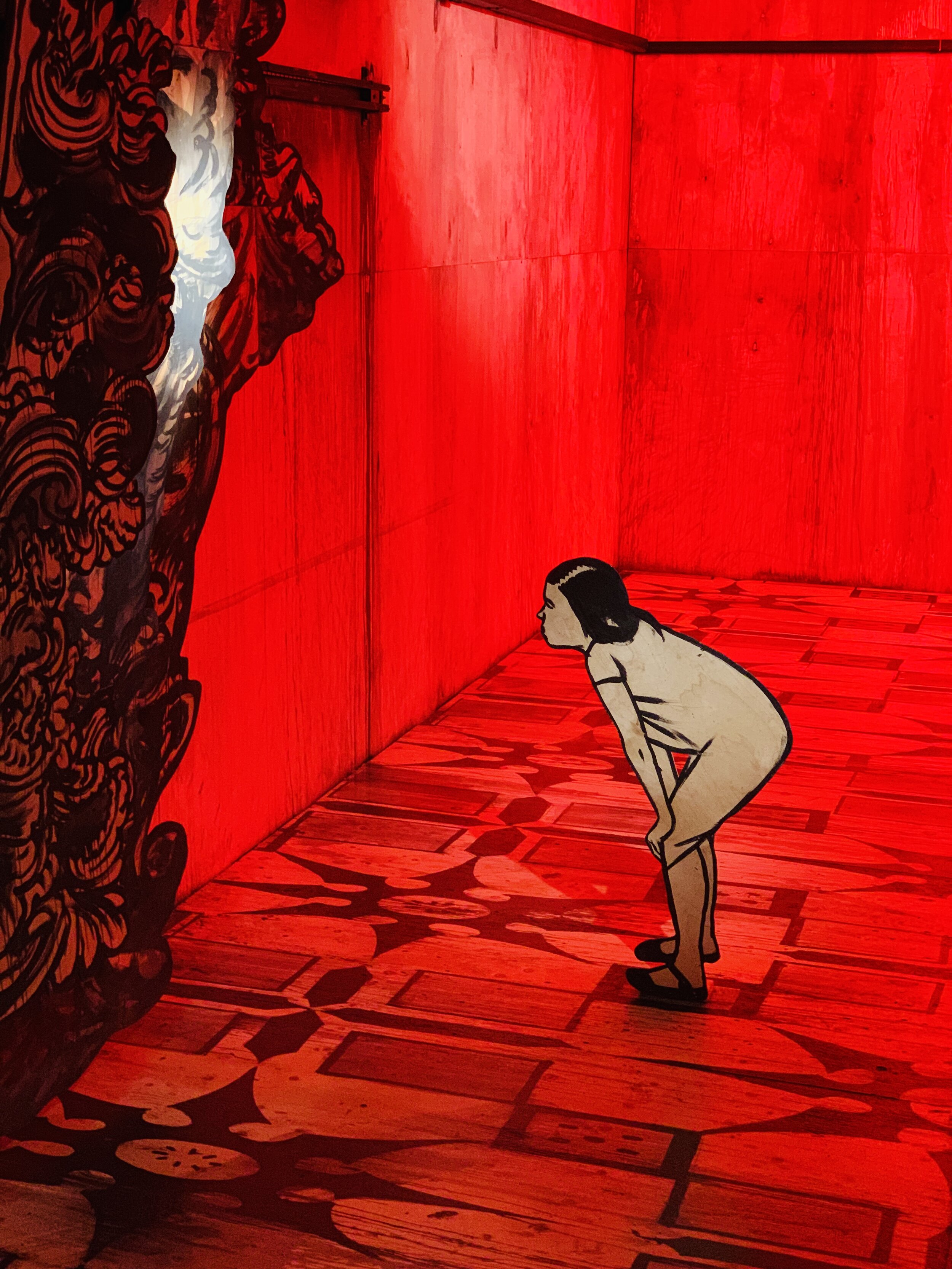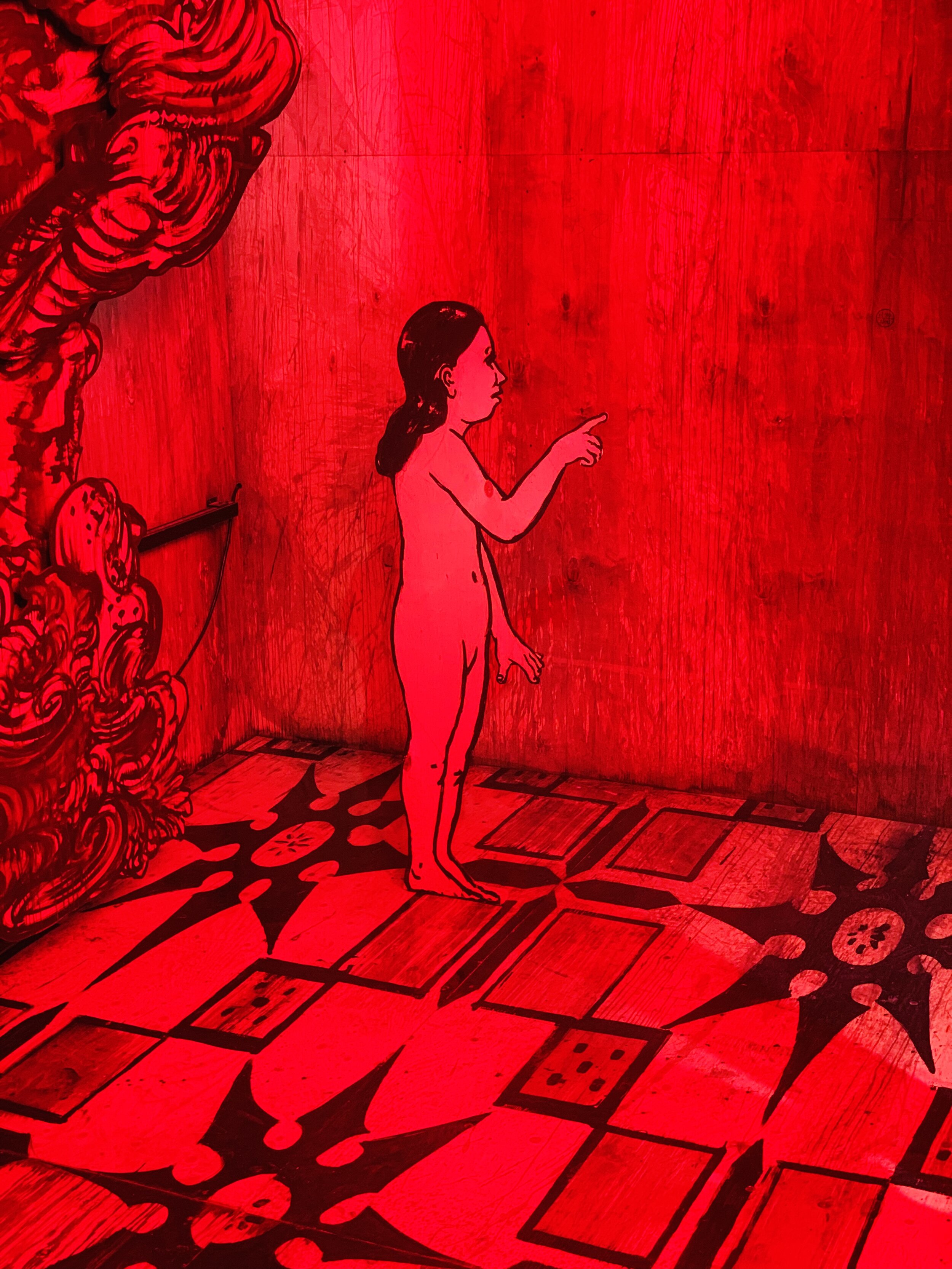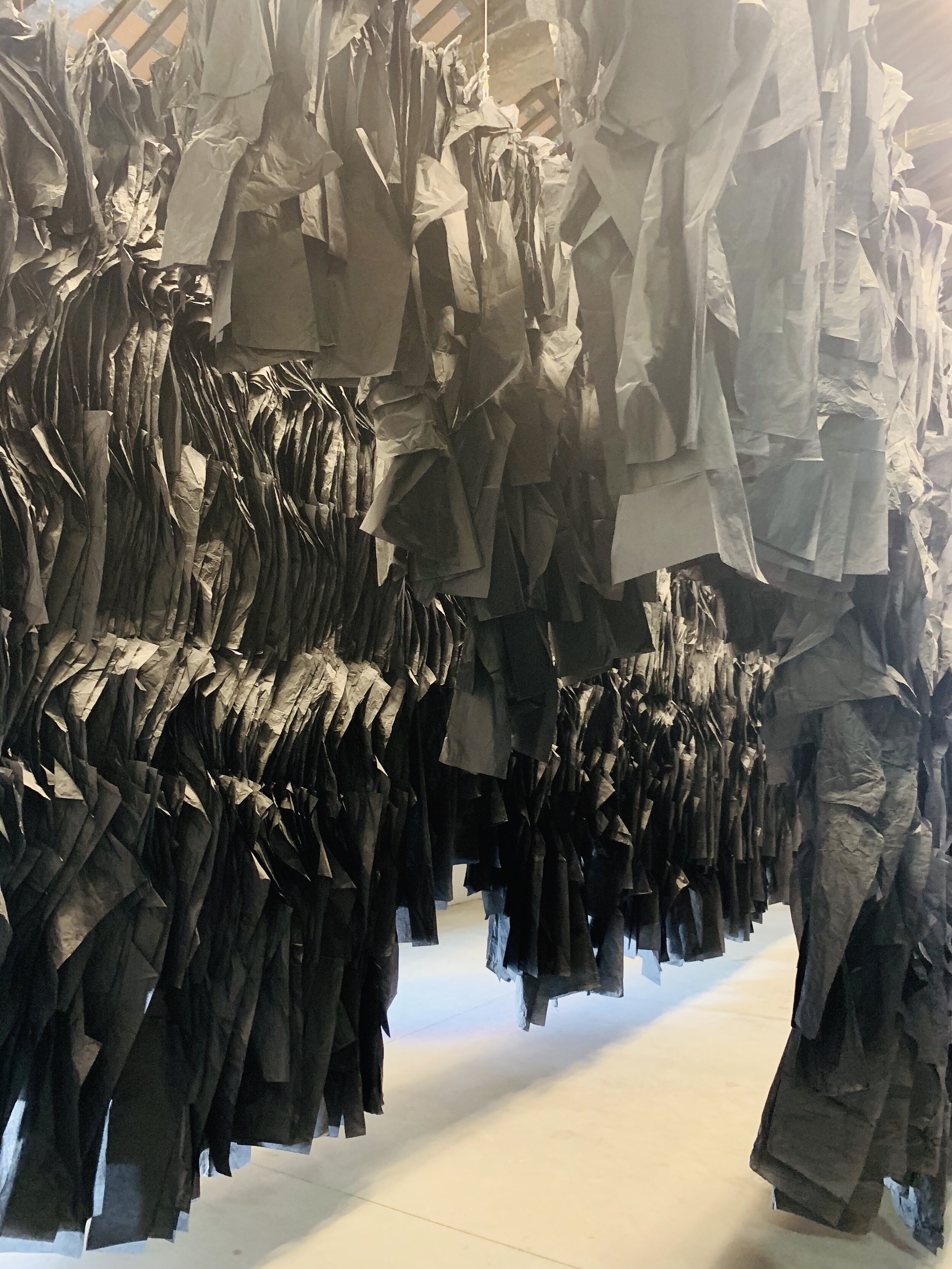58th International Art Exhibition Biennale Arte 2019 Venice, 11.05 – 24.11.2019
Alexander Shishkin-Hokusai, Lc 15:11-32, Russia Pavilion 58th International Art Exhibition Biennale Arte 2019 Venice PHOTO CREDIT BY WWW.POPCINEMA.ORG
58th International Art Exhibition Biennale Arte 2019 Venice, 11.05 – 24.11.2019
Author review: Roberto Matteucci
Click Here for Italian Version
58th Venice International Art Exhibition of Venice has been curated by Ralph Rugoff, director of the Hayward Gallery in London. 90 countries and 79 artists participated.
As always, the main sites are two: Arsenale and Giardini. The curator has imagined two parallel paths, so an exhibitor could be present in both locations.
The title is cerebral: May You Live in Interesting Time.
An ancient Chinese saying, a maxim quoted by illustrious intellectuals.
But that is false! The Chinese phrase is a legend. That is the meaning: believe in a fake.
The curator explains this:
”Then there’s the fact that this is also a piece of fake news: it’s been claimed over and over again during the past 100 years that it’s an ancient Chinese curse—everyone from pre-war politicians in the UK to Hillary Clinton, from Albert Camus to Arthur C Clarke have used this phrase, talking about it as an ancient Chinese curse—even though it isn’t and never was.” (1)
A fundamental concept. Artists attribute abstractions, high-sounding principles to their artworks, then peddle misleading interpretations. Certain explanations are exclusively trendy or publicity or political conformism or mainstream thinking or simply a way to make money.
The artwork goes beyond the banal title, art has a modern and dreamlike charm, hits our feeling.
The artwork surpasses its author and his natural desire to feed his family.
Ralph Rugoff again:
“For me, that is the goal of this exhibition: that it leaves people with interesting questions that they can carry with them afterwards. It is very much a show dedicated to the idea that the most important thing that happens doesn’t happen inside the gallery—it is what visitors do with that experience after they leave.” (1)
The artwork belongs to the viewer, who — after scrutinizing, examined, studied, intuited it — metaphorically, brings it home.
Contemporary art does not necessarily have a logical value:
“I hope that the work in this Exhibition is accessible to lots of different kinds of people, I think it is and I think it gives people pleasure, I think that’s important, often when we talk about art we talk about the intellectual side, what it means or what issues it is dealing with, it’s kind of boring because we read the newspaper for that, art has to activate somehow pleasure centres in your brain that you didn’t even know existed, or to play with them in a different way than they have ever been played with, and that makes you feel something different and that different feeling gives you the motivation to try to understand why that is happening and that’s when you begin to understand what the work is opening up and making possible.” (2)
Therefore, contemporary art is only a consumer affair, which has the exact “pleaseure centres” or “play with them in a different way” to understand it.
Tomás Saraceno, Aero(s)scene/ When breath becomes air, when atmospheres become the movement for a post fossil fuel era against carbon-capitalist clouds, 58th International Art Exhibition Biennale Arte 2019 Venice PHOTO CREDIT BY WWW.POPCINEMA.ORG
In Arsenale, directly on the lagoon, there is striking installation by Tom's Saraceno. The creation is connected with the sea and Venice, in a beautiful background. It is an exclusive sensation, the sun reflects in the water, causing a pleasure of colours and moods. The stunning execution affects the “pleaseure centres” and with it, we can play. Nevertheless, the author called it: When breath becomes air, when atmospheres become the movement for a post fossil fuel era against carbon-capitalist clouds. What does it mean? What is the link?
It is a bloody radical-chic title, to follow ephemeral trends. It does not define the artistic product, it is a fiction, like the Chinese curse.
Sun Yuan & Peng Yu, come from China, with the installation “Can’t help myself”, they strike with the damnation of the robot.
In a plexiglass box, an automatic arm, endlessly, tries to clean the surface of a red liquid. This mechanical and electronic apparatus moves elegantly like a dancer.
The peculiarity is funny: the automaton does not wash, it only redistributes the fluid inside. It is an illusion. The action of cleaning does not have any sense, it is useless industriousness. The red, like blood, is squirted everywhere if there were no barriers it would reach the audience.
Sun Yuan & Peng Yu’s ruthless and comical machine follows an algorithmic. It beats thirty-two movements, perpetually identical. It is the terrible consequence of the robot dictatorship, it can only make planned programs, there are no exceptions or imaginative or unpredictable gestures. Are these the interesting times of the curse?
Worse is the mechanism of the Indian Shilpa Gupta Untitled.
The setting is spooky. It is the day-after or the abandoned house. An iron gate continuously and repeatedly slams against the wall. Two elements worry the spectators. The first is the sound, the noise with which the grating hits on the wall. The second, more distressing, is the effect: the gate breaks the wall, composing a drawing in its image and likeness. Again, the tyranny of robots is producing an alienated and persecuted world. Still, interesting times to live?
The result of the cybernetic damnation is exhibited by the German Alexandra Birken in Eskalation.
Alexandra Birken, Eskalation, 58th International Art Exhibition Biennale Arte 2019 Venice PHOTO CREDIT BY WWW.POPCINEMA.ORG
Forty macabre figures of men in black latex are hung on the ceiling of the Arsenal. Visitors walk under this oppressive presence, the dark forms inspire anxiety, despair, restlessness. When would we find menacing ghosts over our heads? Everything will be born by our technology? It is the chilling literary dystopia with no future.
Shapes are outer skin, have no substance, and when they collapse to the ground they fade. The same epidermis of St. Bartholomew's Chapel Sistine. Michelangelo depicts him as his self-portrait. St. Bartholomew is a martyr, skinned, and he falls without texture. Equal appearance and expression of the disgusting beings of Birken.
Joel AdrianoMearisoa, I have forgotten ther night, 58th International Art Exhibition Biennale Arte 2019 Venice PHOTO CREDIT BY WWW.POPCINEMA.ORG
Constant terror is in the pavilion of Madagascar - the first time in Venice - with I have forgotten the night, by Joel Adriano Mearisoa.
The black paper figures must be crossed. Impossible not to touch them. They are mysterious, but above all, intimidating despite being weak and fluttering.
Jantsankhorol Erdenebayar, A Temporality, Mongolia Pavillion, 58th International Art Exhibition Biennale Arte 2019 Venice PHOTO CREDIT BY WWW.POPCINEMA.ORG
In the Mongolian Pavilion, Jantsankhorol Erdenebayar creates an installation titled A Temporality. Black small columns are surrounded by a red bright. The atmosphere changes considerably in the reflection of the red illumination, but the prevailing colour, black, remains unchanged like in the other pavilions. The architectural aspect is added. It is not space as wide as Arsenale. It is in a building outside. The hall is cramped, the horizontal gloomy elements are suffocating and red helps to drug the eyes.
The exclusive reality is the phenomenology of the Russian pavilion.
The curator is Mikhail Piotrovsky the director of the Hermitage while the exhibitors are the St. Petersburg artist Alexander Shishkin-Hokusai and the filmmaker Alexander Sokurov, winner of the Venice Film Festival in 2011 with the film Faust.
The pavilion is an exaltation of one of the most famous paintings of the Peter museum: The Return of the Prodigal Son by Rembrandt painted in 1668.
The Gospel of Luke 15:11-32 tells the parable of the prodigal son. The selfish son leaves his family with half of the assets. However, it was a failure, and he was forced into a hardship life as working as pig carer. The following is a pity, indulgence:
“... While he was still a long way off, his father caught sight of him, and was filled with compassion. He ran to his son, embraced him and kissed him. His son said to him, 'Father, I have sinned against heaven and against you; I no longer deserve to be called your son.' … Take the fattened calf and slaughter it. Then let us celebrate with a feast, because this son of mine was dead, and has come to life again; he was lost, and has been found.' Then the celebration began. Now the older son had been out in the field and, on his way back, as he neared the house, he heard the sound of music and dancing. … He said to his father in reply, 'Look, all these years I served you and not once did I disobey your orders; yet you never gave me even a young goat to feast on with my friends. But when your son returns who swallowed up your property with prostitutes, for him you slaughter the fattened calf.' He said to him, 'My son, you are here with me always; everything I have is yours. But now we must celebrate and rejoice, because your brother was dead and has come to life again; he was lost and has been found.'".
In Rembrandt’s painting, the prodigal son kneels in front of his dad. He is in a bad condition, dirty, barefoot, in a rag dress. His face is leaned on the father's chest, who embraces him tenderly. The father is old, haughty, distinguished, wearing a cape. The look is caring. On the side is the elderly brother, he is in red too, his hands clutching a walking stick. He stares at the two but is doubtful, detached. The building looks like an obscure cave, the light is pointed at the father and son, the others in the shade gradually.
The creators represent it in two areas.
Alexander Sokurov, Lc 15:11-32, Russia Pavilion 58th International Art Exhibition Biennale Arte 2019 Venice PHOTO CREDIT BY WWW.POPCINEMA.ORG
In the first, Sokurov reinterprets Rembrandt with more intense merciful humanity. The space is dark, as in the original, the brightness is a tribute to paternal love. The man is old, suffering, his hug is feeble, his hands, with compassion, are delicately on the son’s back. The father removes the torment of loneliness with the happiness of the encounter. They both suffered sadness, separation. Fatherly love understood the grief while the son had to fall to rediscover humility.
He is ready for extreme capitulation because he is hungry, not even the carobs give him. When the father hugs him, immediately, he acquires the awareness that he exchanged filial dignity for precarious material advantages, that he finished in a short while.
Now he will have to rise to show respect to his dad and gets back the fraternal affection, who is perplexed about pacification, or at least about the celebrations.
In the basement of the pavilion, there is the installation of Alexander Shishkin-Hokusai, imagined as a mechanical game. Everything is red. The silhouette of a naked little girl looks carefully in the hall and the big picture. The performance of the girl is cheerfully disturbed by a machine with an alternating fluctuation. Sitting there are anthropic forms, they go in height, slowly or quickly, alone or all together. Even here, red is dominant. The device produces a vibrating smash. In the front, there is a large painting. The enjoyment of participating in the game is total.
An exhibition with abrupt changes, ups and downs, similar to the reactions of viewers amazed by contemporary art.
In the pavilion of Russia, nobody can stand. People sit motionlessly or jump from the chairs surprised.







